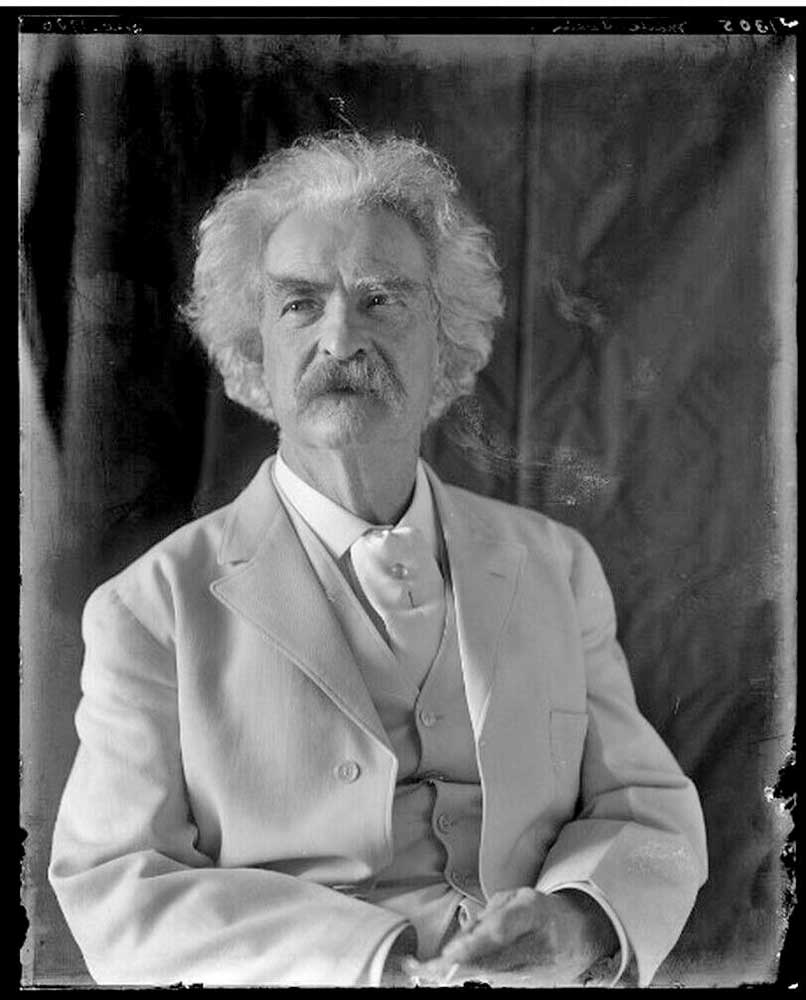Elementary my dear… As the fabrics of our lives change, are we unravelling?
Published 11:43 am Saturday, January 29, 2022

- Samuel Clemens, also known as Mark Twain, (1835-1910) famously said: “Clothes make the man.” Often forgotten, however, is the second part of his comment which concerns the influence our fashion choices have upon our lives.
It occurs to me that over the course of my lifetime, men’s clothing styles have gone from three-piece suits of worsted wool to denim jeans and to flannels called “sweats.” Women’s fashions have changed more frequently and more erratically but, basically, from the early 1900s it was a matter of skirts and dresses, then trousers, then whatever struck one’s fancy. In fact, several people who now work virtually have confessed to me that they sometimes wear nothing-at-all. As in, why bother.
Trending
My first awareness of clothing trends arrived along with World War II. I was a kindergartener in Alameda, Calif., when my mother went to work at the shipyard as a pipefitter’s helper and was required to wear “trousers.” I have no memory of what they were made of — only that it was a great novelty to see Mommy in long pants. (Years later, in 1996 when she was 85, Martha Murfin helped her buy her first-ever pair of actual blue jeans. She needed them to accompany Les Wilson on his boat on Willapa Bay.)
Then came the “New Look” for women with its fabulous hat concoctions, colorful materials — the beginning of one fashion craze after another. Mom was in her element! Meanwhile, dad’s work-a-day suits gave way to slacks and sports coats and his casual wear here at the beach tended toward polo shirts and brightly checkered golf pants (yikes!) even though he didn’t play golf. Polyesters and other synthetics were “in”!
My folks were hard-working, fun-loving, and when they retired, interested in preserving the past — particularly Oysterville’s past, and other charitable causes. Their frugality went back to their Great Depression beginnings; their eagerness to try new things reflected the changes that came after World War II. Theirs was called the “Greatest Generation.”
Trending
Becoming practical
My generation has moved from formal to more casual dress in all walks of life. Our clothing styles have become more practical — easier to wear, easier to care for, and in most situations, “anything goes” is the norm. But I do remember when the women teachers where I worked in California were instructed to test our dress length by bending over and touching our toes in front of our spouse or a good friend. “If anything unseemly is visible, the dress is too short for wearing to work.”
Several people who now work virtually have confessed to me that they sometimes wear nothing-at-all. As in, why bother.
Nyel still tells about his “dress code” experience as a trust officer at the Bank of California in Seattle. He returned from vacation properly suited, but with the beginnings of a beard. He was asked to report to his manager who asked him, “Do you like your job?” At Nyel’s affirmative reply, he was told, “Then lose the beard.”
Ours is the “Silent Generation” and it’s with us that the unraveling has begun. Certainly, our underwear drawers reveal less fabric than those of our forebears. Bras, panties, briefs, and thongs have replaced the girdles, garter belts, boxers and undershirts of previous generations. Whatever would the Greatest Generation think of so little coverage? And perhaps that’s the reason our generation learned to be silent.
It was Mark Twain who famously said, “Clothes make the man,” meaning that people are judged based on the clothing they wear and are treated accordingly. Extending that thought, setting dress codes was thought to shape behaviors and affect performance on the job or in social situations. Although we’ve pretty much let that idea go, it lingers on in the uniform requirements of ball teams, firefighters, policemen, nurses and doctors.
But wait! Mr. Twain followed his statement “Clothes make the man” with this further remark: “Naked people have little or no influence on society.” Which makes me think of the now-fading, (I hope) butt-crack-reveal craze of a few years back, as well as current-day trends in wearing underwear as outerwear. Though we aren’t actually unraveling thread by thread, our clothing seems to be diminishing at a steady rate and our society seems to be in ever-increasing peril. Only time will tell if Mr. Twain was completely correct.









